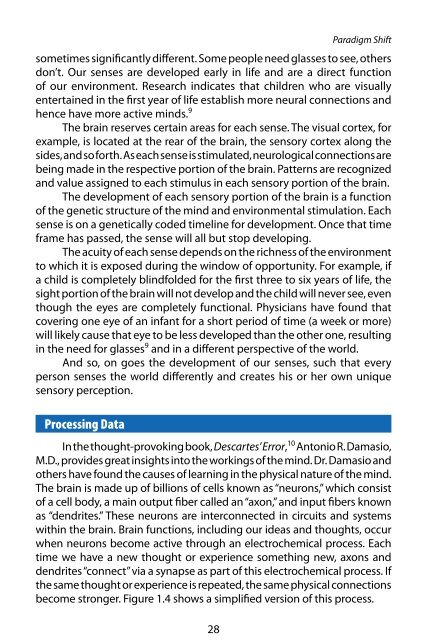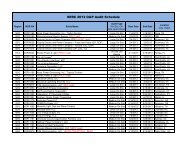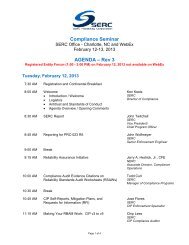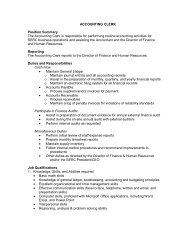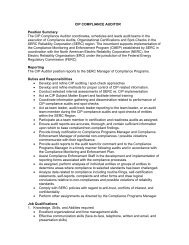RealityCharting e-book .pdf - SERC Home Page
RealityCharting e-book .pdf - SERC Home Page
RealityCharting e-book .pdf - SERC Home Page
- No tags were found...
You also want an ePaper? Increase the reach of your titles
YUMPU automatically turns print PDFs into web optimized ePapers that Google loves.
Paradigm Shift<br />
sometimes significantly different. Some people need glasses to see, others<br />
don’t. Our senses are developed early in life and are a direct function<br />
of our environment. Research indicates that children who are visually<br />
entertained in the first year of life establish more neural connections and<br />
hence have more active minds. 9<br />
The brain reserves certain areas for each sense. The visual cortex, for<br />
example, is located at the rear of the brain, the sensory cortex along the<br />
sides, and so forth. As each sense is stimulated, neurological connections are<br />
being made in the respective portion of the brain. Patterns are recognized<br />
and value assigned to each stimulus in each sensory portion of the brain.<br />
The development of each sensory portion of the brain is a function<br />
of the genetic structure of the mind and environmental stimulation. Each<br />
sense is on a genetically coded timeline for development. Once that time<br />
frame has passed, the sense will all but stop developing.<br />
The acuity of each sense depends on the richness of the environment<br />
to which it is exposed during the window of opportunity. For example, if<br />
a child is completely blindfolded for the first three to six years of life, the<br />
sight portion of the brain will not develop and the child will never see, even<br />
though the eyes are completely functional. Physicians have found that<br />
covering one eye of an infant for a short period of time (a week or more)<br />
will likely cause that eye to be less developed than the other one, resulting<br />
in the need for glasses 9 and in a different perspective of the world.<br />
And so, on goes the development of our senses, such that every<br />
person senses the world differently and creates his or her own unique<br />
sensory perception.<br />
Processing Data<br />
In the thought-provoking <strong>book</strong>, Descartes’ Error, 10 Antonio R. Damasio,<br />
M.D., provides great insights into the workings of the mind. Dr. Damasio and<br />
others have found the causes of learning in the physical nature of the mind.<br />
The brain is made up of billions of cells known as “neurons,” which consist<br />
of a cell body, a main output fiber called an “axon,” and input fibers known<br />
as “dendrites.” These neurons are interconnected in circuits and systems<br />
within the brain. Brain functions, including our ideas and thoughts, occur<br />
when neurons become active through an electrochemical process. Each<br />
time we have a new thought or experience something new, axons and<br />
dendrites “connect” via a synapse as part of this electrochemical process. If<br />
the same thought or experience is repeated, the same physical connections<br />
become stronger. Figure 1.4 shows a simplified version of this process.<br />
28


